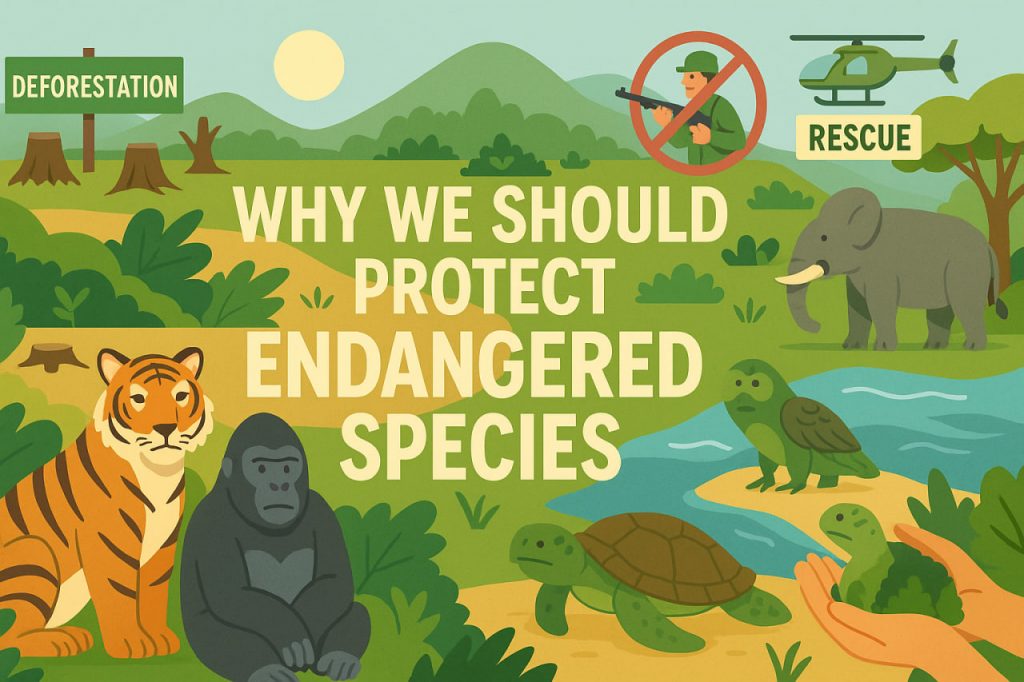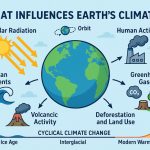Across the globe, thousands of species are at risk of disappearing forever. From iconic animals like tigers and elephants to lesser-known frogs, birds, and plants, Earth’s biodiversity is under severe threat. But why should we care? Protecting endangered species is not just about saving individual animals—it’s about preserving the balance of nature, ecosystems, and even the future of humanity.
What Does “Endangered” Mean?
A species is considered endangered when its population becomes so small that it faces a high risk of extinction in the near future. This status is often assigned by global organizations like the International Union for Conservation of Nature (IUCN), which tracks species in its Red List.
There are several levels of risk:
- Vulnerable
- Endangered
- Critically Endangered
- Extinct in the Wild
- Extinct
Examples of endangered species include the orangutan, black rhinoceros, vaquita porpoise, and pangolin.
Why Are Species Going Extinct?
Most modern extinctions are caused by human activity. The main threats include:
- Habitat destruction – due to deforestation, agriculture, and urbanization
- Poaching and illegal wildlife trade
- Pollution – including plastic waste and toxic chemicals
- Climate change – altering ecosystems and weather patterns
- Invasive species – non-native species that outcompete or prey on native ones
As ecosystems are disrupted, animals lose their homes, food sources, and ability to reproduce.
Why Should We Protect Endangered Species?
1. Biodiversity Maintains Ecosystem Balance
Every species plays a role in its ecosystem. If one disappears, it can trigger a chain reaction. For example, if bees vanish, plants won’t get pollinated, affecting food supply for both animals and humans.
2. Natural Resources and Medicine
Many plants and animals are sources of food, fuel, and medicines. The extinction of a species could mean the loss of potential cures for diseases like cancer or infections.
3. Cultural and Ethical Responsibility
Animals and nature are central to the cultures, traditions, and religions of many communities. We also have an ethical duty to protect life on Earth, especially when we are the cause of its decline.
4. Economic Value and Ecotourism
Wildlife attracts tourists, which supports local economies. Preserving species ensures long-term sustainable income, particularly in developing regions.
5. Indicator of Environmental Health
Endangered species often signal broader environmental problems. Saving them helps us protect entire ecosystems that humans also rely on—for clean air, water, and soil.
What Can Be Done?
Efforts to protect endangered species include:
- Creating protected areas like national parks and wildlife reserves
- Restoring habitats through reforestation and conservation projects
- Legislation to ban illegal hunting and trade
- Captive breeding programs and reintroductions into the wild
- Climate action to reduce carbon emissions
- Education to raise awareness and promote responsible consumption
Even simple actions—like avoiding plastic, supporting ethical tourism, and choosing sustainable products—can make a difference.
Conclusion
Protecting endangered species is not just about saving animals; it’s about preserving life itself. Each species lost is a thread pulled from the web of life, and if too many break, ecosystems—and humanity—may collapse. We have the tools and the knowledge to reverse the trend. Now we need the will to act.
Glossary
- Endangered: At serious risk of extinction
- Ecosystem: A community of interacting organisms and their environment
- Poaching: Illegal hunting of animals
- Biodiversity: The variety of living species on Earth
- Invasive species: Non-native species that harm native ecosystems


